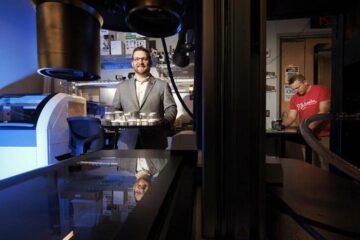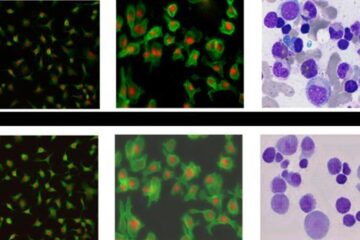Organic practices slightly affect corn and soybean yields

Scientists from the University of Minnesota demonstrated yields of corn and soybeans were only minimally reduced when organic production practices were utilized as compared with conventional production practices. After factoring in production costs, net returns between the two production strategies were equivalent.
More than 80% of corn and soybeans produced in the United States is grown in the Midwest, the vast majority with conventional production practices in a corn-soybean rotation requiring annual synthetic fertilizer and pesticide application. This corn-soybean rotation is practiced on over 100 million acres.
Organic production practices, in compliance with standards defined by the United States Department of Agriculture’s National Organic Program (NOP), offer an alternative production system to conventional practices. The study of the influence of rotation length on yield of corn and soybean when grown utilizing organic and conventional production practices is published in the March-April, 2003 issue of Agronomy Journal, a publication of the American Society of Agronomy.
The study was conducted at two Minnesota locations from 1989 to 1999. Scientists evaluated a two-year corn-soybean rotation and a four-year corn-soybean-oat/alfalfa-alfalfa rotation under conventional and organic management and production strategies.
The analysis of yield data began in 1993, after the first complete cycle of the four-year rotation had occurred. From 1993 through 1999, yield of corn grown in the conventional two-year rotation averaged 143 and 139 bushels per acre at the two locations, while corn grown in the organic four-year rotation averaged nine percent and seven percent less, respectively.
During the same time frame, soybeans grown in the conventional two-year rotation averaged 43.1 and 40.7 bushels per acre, while organically produced soybeans averaged 19 percent and 16 percent less, respectively. Weed control was a major factor for the reduced yields in the organic production system, says Paul Porter, a University of Minnesota agronomist and co-author of the article. The larger yield reductions from organically produced soybeans relative to corn were associated with increased weed pressure in the soybean crop because of its placement in the rotation sequence.
While there was a reduction in both corn and soybean yields in the four-year organic strategy compared with the two-year conventional strategy, the organic strategy had lower production costs than the conventional strategy. Consequently, net returns for the two strategies were equivalent, without taking organic price premiums into account.
Conventionally produced soybeans were more responsive than conventionally produced corn to the expanded rotation length, Porter says. Whereas conventionally grown soybeans in the four-year rotation yielded three to six percent more than soybeans grown in the two-year rotation, conventionally grown corn in the four-year rotation yielded the same to four percent less than corn grown in the two-year rotation. These results suggest conventional soybean yields would be increased when grown in a longer rotation than the commonly practiced two-year corn-soybean rotation.
Agronomy Journal, http://agron.scijournals.org is a peer-reviewed, international journal of agriculture and natural resource sciences published six times a year by the American Society of Agronomy (ASA). Agronomy Journal contains research papers on all aspects of crop and soil science including resident education, military land use and management, agroclimatology and agronomic modeling, extension education, environmental quality, international agronomy, agricultural research station management, and integrated agricultural systems.
The American Society of Agronomy (ASA) www.agronomy.org, the Crop Science Society of America (CSSA) www.crops.org and the Soil Science Society of America (SSSA) www.soils.org are educational organizations helping their 10,000+ members advance the disciplines and practices of agronomy, crop and soil sciences by supporting professional growth and science policy initiatives, and by providing quality, research-based publications and a variety of member services.
Media Contact
All latest news from the category: Agricultural and Forestry Science
Newest articles

Bringing bio-inspired robots to life
Nebraska researcher Eric Markvicka gets NSF CAREER Award to pursue manufacture of novel materials for soft robotics and stretchable electronics. Engineers are increasingly eager to develop robots that mimic the…

Bella moths use poison to attract mates
Scientists are closer to finding out how. Pyrrolizidine alkaloids are as bitter and toxic as they are hard to pronounce. They’re produced by several different types of plants and are…

AI tool creates ‘synthetic’ images of cells
…for enhanced microscopy analysis. Observing individual cells through microscopes can reveal a range of important cell biological phenomena that frequently play a role in human diseases, but the process of…





















